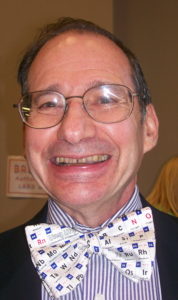

Note: All materials on this site are the copyrighted property of Alfred B. Bortz. Individuals may print single copies of reviews or columns for their own use. For permission to publish or print multiple copies of any of the materials on this site, please contact the author by e-mail.
 Special Relativity and Classical Field Theory: The Theoretical Minimum.
Special Relativity and Classical Field Theory: The Theoretical Minimum.
 The Quantum Labyrinth: How Richard Feynman and John Wheeler Revolutionized Time and Reality, noted science writer Paul Halpern captures the interaction of a pair of provocateur iconoclasts as they tackle some of the most challenging questions about the quantum underpinnings of matter and energy. The book's publicity characterizes the protagonists this way: "The soft-spoken Wheeler, though conservative in appearance, was a raging nonconformist full of wild ideas about the universe. The boisterous Feynman was a cautious physicist who believed only what could be tested. Yet they were complementary spirits."
The Quantum Labyrinth: How Richard Feynman and John Wheeler Revolutionized Time and Reality, noted science writer Paul Halpern captures the interaction of a pair of provocateur iconoclasts as they tackle some of the most challenging questions about the quantum underpinnings of matter and energy. The book's publicity characterizes the protagonists this way: "The soft-spoken Wheeler, though conservative in appearance, was a raging nonconformist full of wild ideas about the universe. The boisterous Feynman was a cautious physicist who believed only what could be tested. Yet they were complementary spirits."
 Modern Classical Physics: Optics, Fluids, Plasmas, Elasticity, Relativity, and Statistical Physics. Its 1500-plus pages are bound to be a challenge for physics students to absorb and to carry. But I anticipate that it will become a multi-course standard at many top universities.
Modern Classical Physics: Optics, Fluids, Plasmas, Elasticity, Relativity, and Statistical Physics. Its 1500-plus pages are bound to be a challenge for physics students to absorb and to carry. But I anticipate that it will become a multi-course standard at many top universities.
 The Fear Factor: How One Emotion Connects Altruists, Psychopaths, & Everyone In-Between. Based on her MRI studies of the brains of exceptional people at the extremes of the spectrum from altruism to psychopathy, March has crafted a book that takes readers on an adventure. One can only ask, will readers be too scared to put it down without finishing a chapter?
The Fear Factor: How One Emotion Connects Altruists, Psychopaths, & Everyone In-Between. Based on her MRI studies of the brains of exceptional people at the extremes of the spectrum from altruism to psychopathy, March has crafted a book that takes readers on an adventure. One can only ask, will readers be too scared to put it down without finishing a chapter?